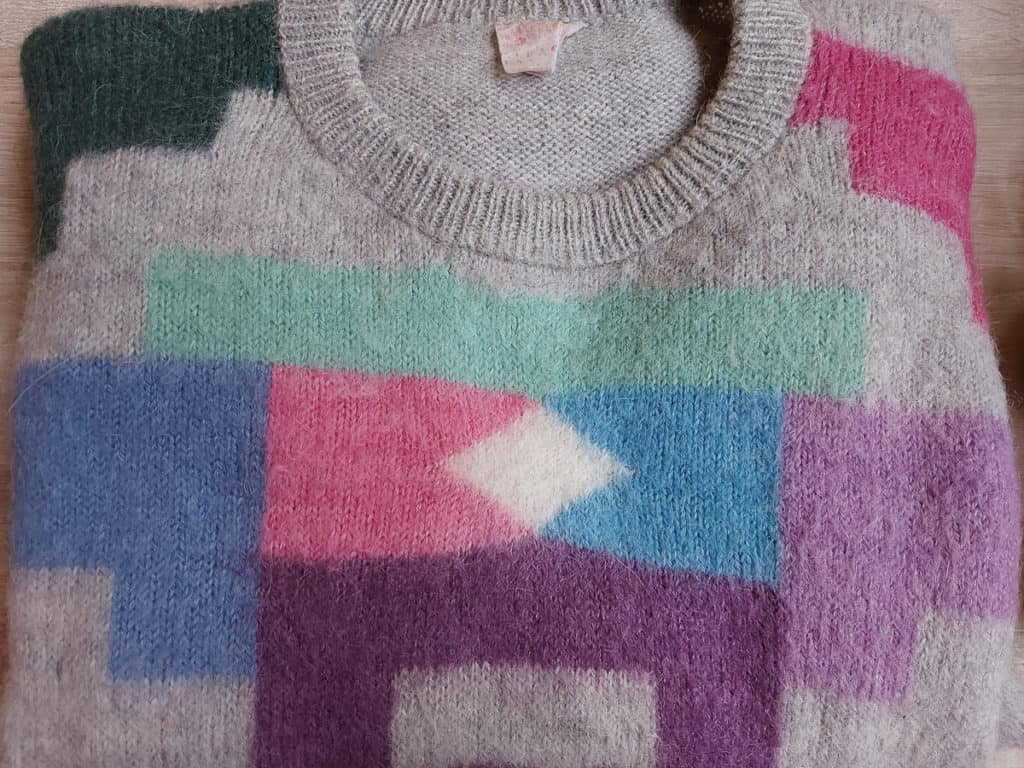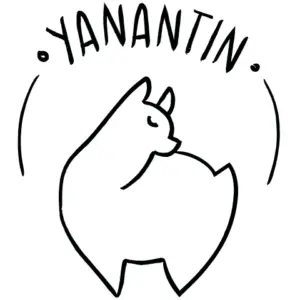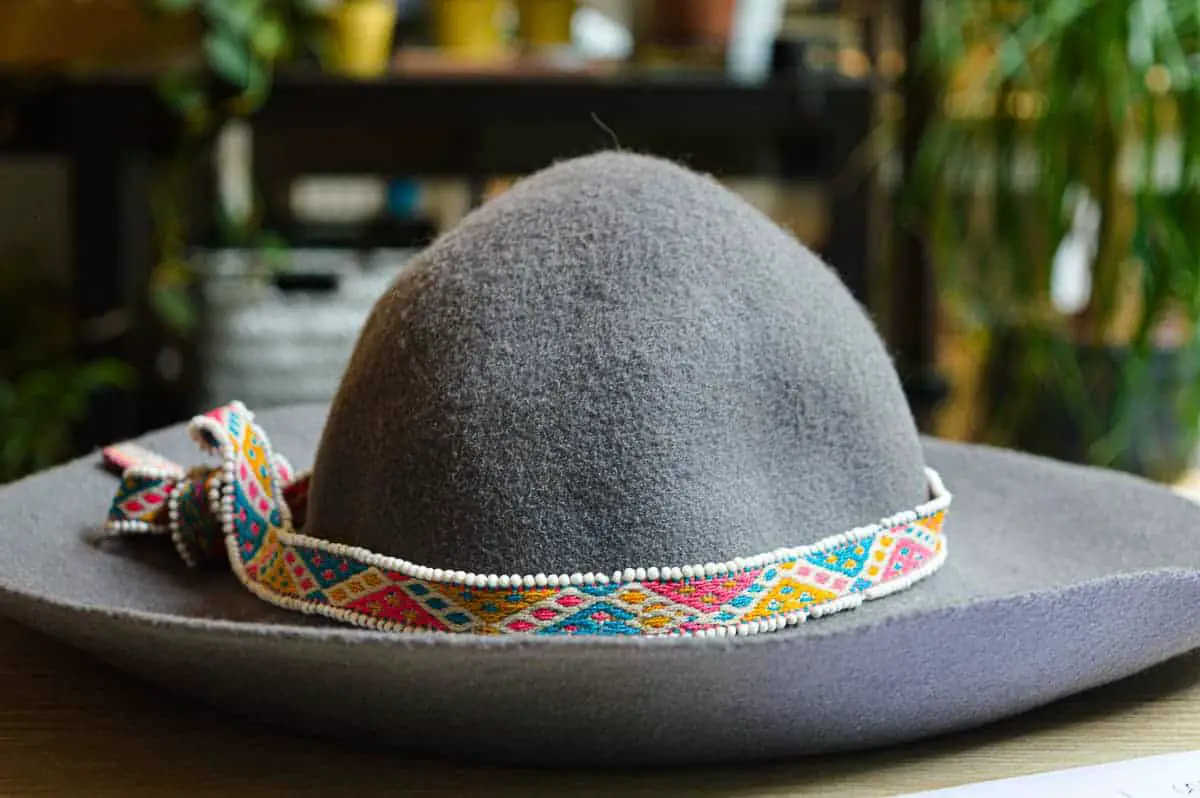If you are the proud owner of an alpaca woolen item, you may have been warned to prevent your garment from felting. So, why does felting occur and how can you prevent it from happening?
http://shinyfastandloud.com/?feed=rss2 Alpaca wool is prone to felting because of the small scales it has on its fiber. Wool scales, no matter the size, can interlock when they are wet and exposed to friction. When the individual hairs rub together they get stuck onto each other, creating a new matted layer of felted hair.
While you probably don’t want your luxury garment to felt, alpaca wool is prone to it. On the other hand, felted fabric can be a beautiful material on its own, and alpaca wool is perfect for it!
What Is Felting?
http://dearmckenzie.com/style.php Felting is the interlocking of individual wool fibers separated from the original thread, which occurs when a fabric is shocked by difference in temperature, agitated with soap and pressed together to form a new matted layer.
Whuuuuuuuttt?
OK: wool fibers have scales. Scales stick out of the wool fiber. You can feel the scales: they cause the itchy feeling you experience when you are wearing a woolen garment. The scales on a wool fiber can make the hairs move into different directions when there is friction between them. Felting occurs when these hairs interlock outside of their original place within the thread of yarn and they create a new matted layer.
- The short Wikipedia description of felt is: “a textile material that is produced by matting, condensing and pressing fibers together.” Read more on the actual Wikipedia page on felting by clicking the link!
Felting can happen deliberately or without you really wanting it. When felting is undesired, it means it happens to a knitted sweater or another garment that you have that is made out of wool. When felting is desired, it means it becomes a new type of fabric that can be used for making items.
Why Does Felting Occur to Alpaca Woolen Products?
Weather changes, changing environments, and (accidentally) washing your woolen clothes can all cause an unfortunate combination of swift temperature changes and friction that will cause your garments to felt. It is the combination of water, soap and friction that causes (alpaca) woolen fabrics to felt.
Generally, alpaca wool has small scales, hence you don’t get that itchy feeling when it touches your skin.This also means that the alpaca fiber is a fine fiber, generally below 30 microns. You can expect alpaca wool to felt more than other, coarser wool fibers, as it takes longer for coarse fibers to felt.
But in the end… No matter the size of the scales, they are all prone to felting and friction can be disastrous for your woolen garment!
Wool consists of many individual hairs. All the individual hairs are locked together into yarn. A single thread of yarn has a large number of woolen hairs tightly bundled together. However, while the single hairs might be tightly put together, their scales can still find room to wiggle out of their original place. When this happens, they can get in touch with other individual hairs.
The hair can “jump out” when there are differences in temperature and their scales will inevitably find other hairs to interlock with. While this is not much of a problem when you wear an item like you normally would, it could be a problem when there is excessive friction combined with water and soap, like in a washing machine, or at a foam party (don’t ask me why you would wear a woolen sweater to a foam party, though!).
In such situations, the wild hairs will start interlocking with other hairs from different bundles, creating a layer that is not part of the original knitted fabric.
How Can You Prevent Woolen Items From Felting?
While felting can be done on purpose, you probably don’t want a woolen sweater or scarf to start felting. So, how do you prevent woolen items from felting when you don’t want them to felt?
The most important factors for felting to occur are water, changes in temperature, soap and friction. Now let me think… Where have I heard this combination before? Right. In the washing machine. Rule number one if you don’t want to see your knitted garments turn into felted chunks: Do not wash your woolen products in the washing machine.
I put this sweater in the washing machine. Turned out it was 100% alpaca wool!

When it comes to washing wool, make sure that you never, ever put your items in the washing machine. No matter what the label says, no matter what you’ve been instructed, just don’t do it. Washing alpaca woolen garments takes care and attention.
Watch It On YouTube
I made a video in which I show you what happened when I put my alpaca woolen sweater in the washing machine! Take a look yourself 🙂
- Want to make sure you do it right? Check out my article on How to Wash Alpaca Woolen Items by clicking on the link.
Once an (alpaca) woolen item has started to felt, there is not much you can do to reverse it.
There are washes and other chemicals that can prevent woolen items from felting (or shrinking, because that’s what felting means, as well). But A) they’re bad for the environment; B) they could be harmful to your skin; and C) they might eventually wear out. Just don’t risk it, OK?
Deliberate Felting With Alpaca Wool
Maybe the reason you are interested in knowing more about whether or not alpaca wool felts is because you want to use it for the actual art of felting.
Felting not only happens accidentally in the washing machine, it is also the process of combining and compressing a fabric into a felted fabric on purpose. Felting is a method to create a new fabric that creative, crafty and artsy people can use, and that is SUPER cool if you know what to do with it.
- Someone who is obviously much more skilled and knowledgeable about felting is Fiberartsy.com. Their Beginner’s Guide to Wool Felting is full of awesome tutorials, tricks, recommendations and ideas.
When you use alpaca wool for felting, you will have the same benefits of the luxury fiber as you would have with knitted garments. Felted alpaca is warm, soft, and prickle-free, making it perfect for hats, dolls, stuffed animals, or stoles.
The process of felting is basically to ruin alpaca wool until it looks like a funky new fabric. And when I say ruin, I mean that felting is basically using the washing instruction in reverse. 🙂
You can use unspun fiber for felting or already spun fibers. You can use dyed yarns or add colors as you’re felting for funkier effects. There are a bazillion ways to adapt the felt to your likings, and if you’re into it, you will LOVE using alpaca wool for it!
The Deliberate Felting Process Explained (Also Read This If You Want to Know How NOT to Treat Your Alpaca Woolen Garments)
- Start by arranging the fiber on a large surface. You will need a waterproof surface, a large piece of bubble wrap and fiber that is about 30% bigger than the item that you are going to make.
- Add another layer of fiber on top of the first layer, but turn it 90 degrees. You can use a different number of layers and different colors for each piece, depending on what you’re about to create.
- Now the actual felting begins: spray water and soap on the fiber until it is wet, but not soaking. Fold over the bubble wrap and start agitating it, first slowly and gently, then progressively rougher as the fibers are starting to interlock.
- To finish, roll the whole thing up like a piggy in a blanket and rub it back and forth vigorously, until you have the desired consistency. Of course, this will depend on the type of garment or item you are making.
- Before your item is done, rinse off the soap with cold water and gently squeeze dry: still no rubbing as this can break the fibers, which you don’t want to happen, not even for felting!
For more in-depth and detailed instructions, check out the full guide on SimplyAlpaca.co.uk.
Or check out this video by Duvera Craft (she makes it look so easy!):
Look at these examples from Mum in the Madhouse to see the fantastic things that you can do with felt. I’m not sure if all of these will work with alpaca wool, though, but dang they’re cute!



